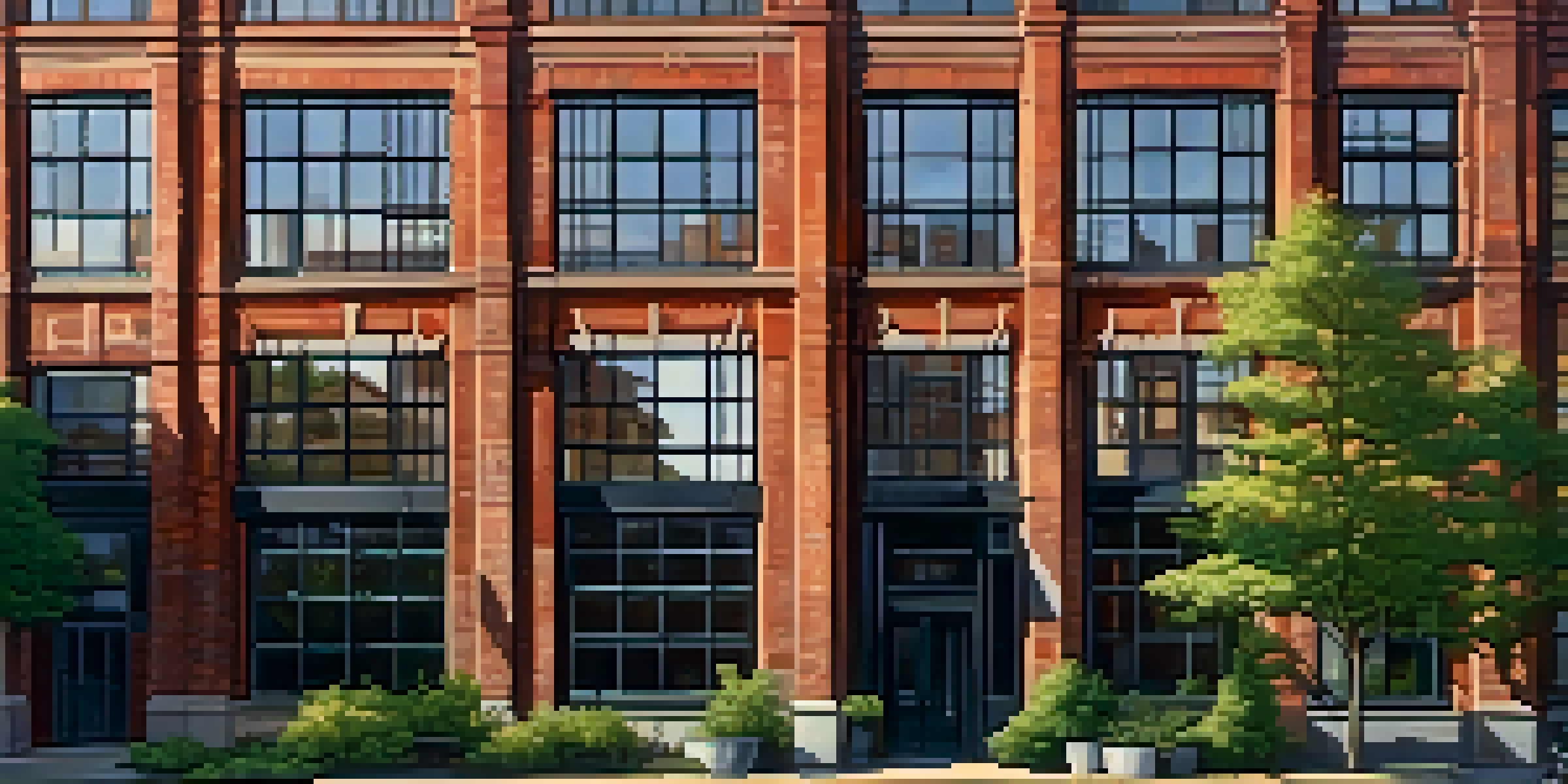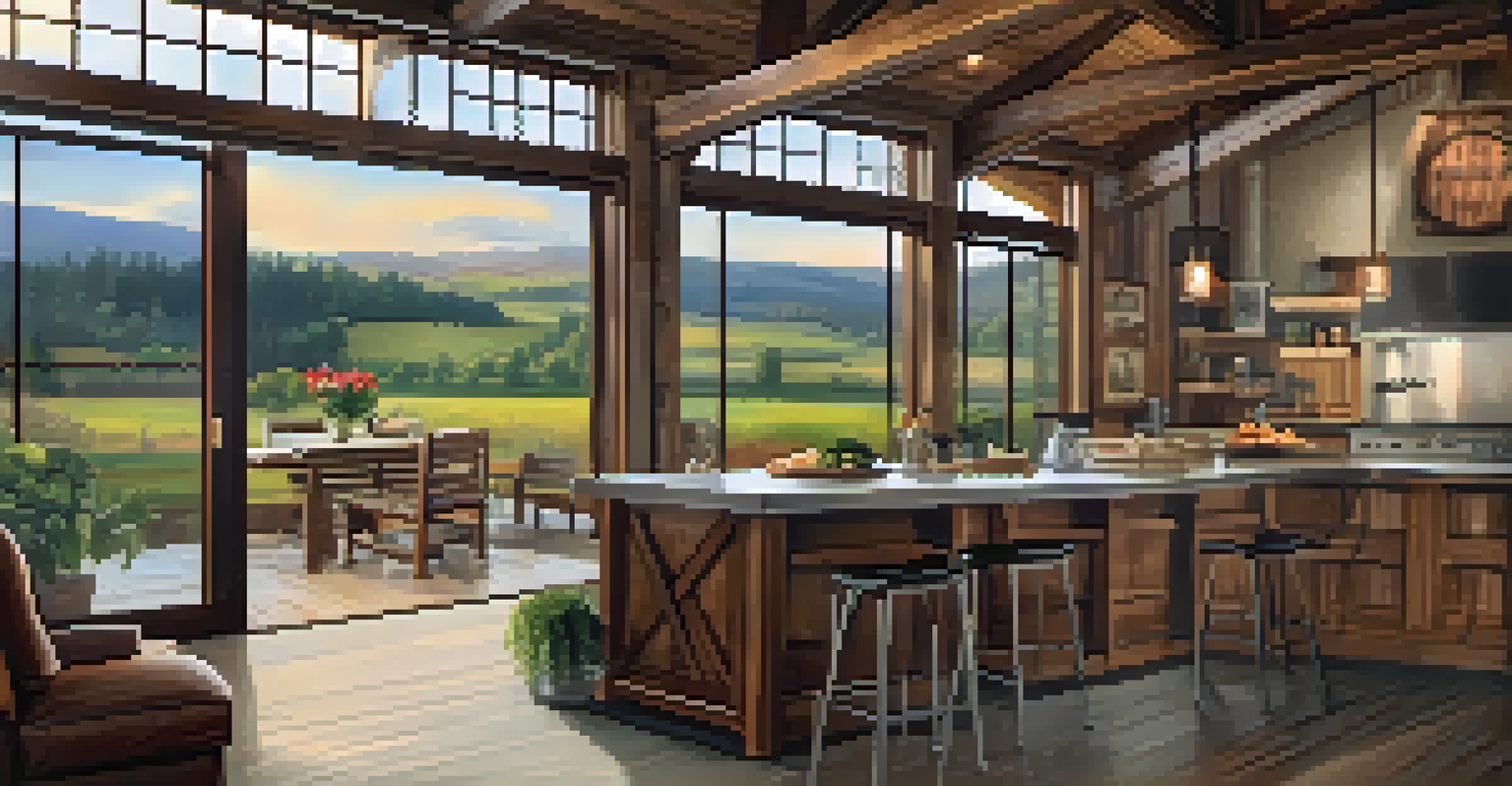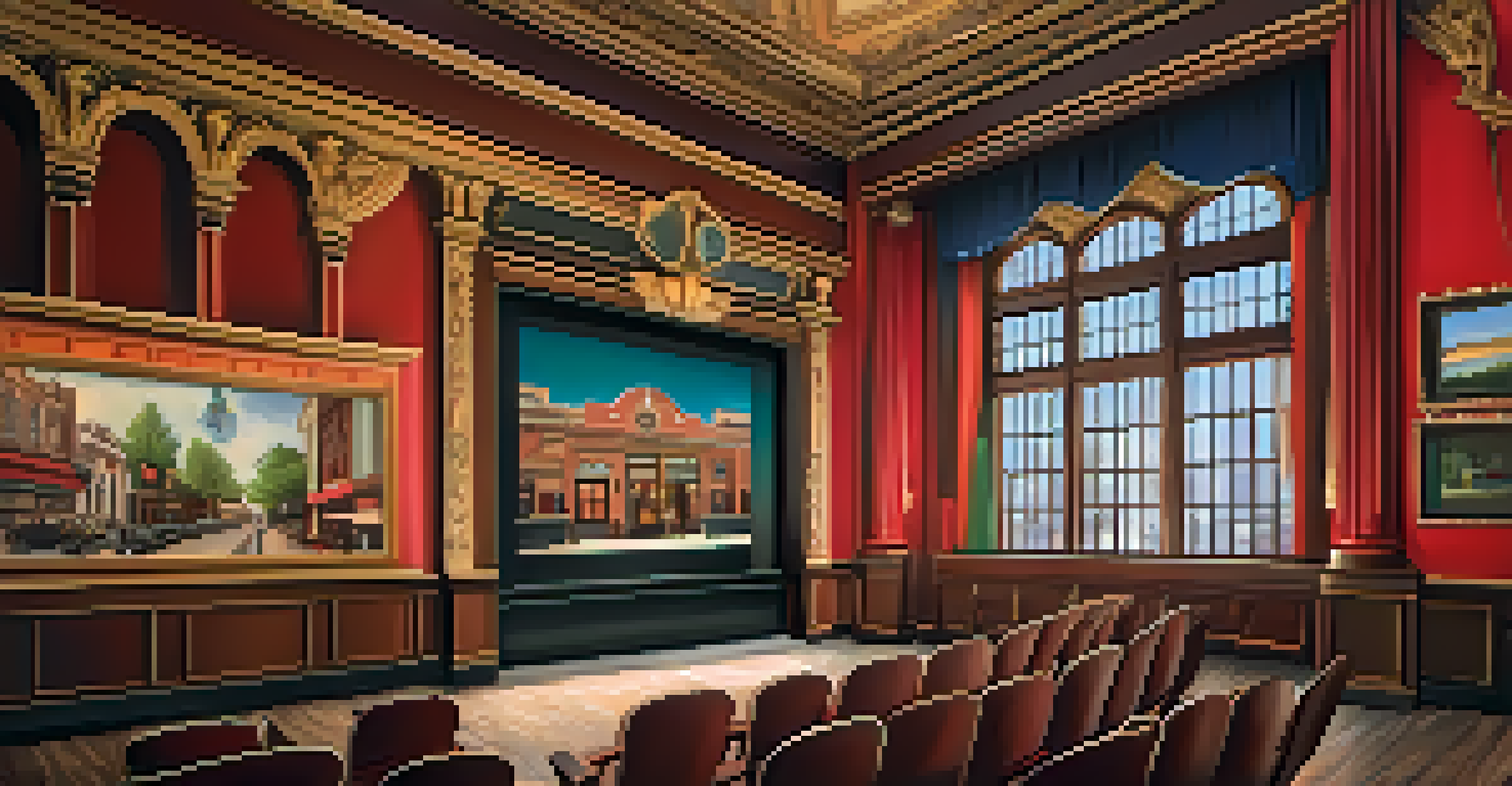The Benefits of Adaptive Reuse in Home Design

Understanding Adaptive Reuse in Home Design
Adaptive reuse refers to the process of repurposing old buildings for new uses while retaining their historical features. This approach not only breathes new life into structures but also preserves their cultural significance. Imagine transforming a defunct factory into stylish lofts or an old school into community centers—each project tells a story.
We shape our buildings; thereafter they shape us.
The beauty of adaptive reuse lies in its ability to combine the charm of the past with modern functionality. By maintaining the original architecture, these projects often evoke a sense of nostalgia while meeting contemporary needs. For example, an old barn can become a cozy home or a chic event space, blending rustic appeal with modern amenities.
Ultimately, understanding adaptive reuse allows homeowners and designers to appreciate the value of existing structures. It promotes creativity in design, encouraging innovative solutions that respect history while embracing change.
Environmental Benefits of Adaptive Reuse
One of the most significant advantages of adaptive reuse is its positive impact on the environment. By repurposing existing buildings, we reduce the need for new construction materials, which can be resource-intensive. This helps conserve natural resources and minimizes waste, making it a more sustainable choice.

Additionally, adaptive reuse often involves upgrading the building's energy efficiency, leading to reduced energy consumption. For instance, retrofitting an old warehouse with modern insulation and solar panels can drastically lower its carbon footprint. This not only benefits the planet but also results in long-term savings on utility bills.
Adaptive Reuse Preserves History
This approach repurposes old buildings while maintaining their historical features, enriching communities with cultural significance.
In essence, adaptive reuse aligns with the growing trend of sustainable living, showing that we can protect the environment while enjoying beautiful, functional spaces. It encourages a mindset shift towards valuing what we already have, rather than constantly seeking new development.
Economic Advantages of Repurposing Buildings
Adaptive reuse can be a smart economic choice for both homeowners and communities. Revitalizing existing structures often costs less than new construction, making it a financially viable option. By investing in these projects, homeowners can increase property values and attract new buyers who appreciate unique, character-filled homes.
The best way to predict the future is to invent it.
Communities also benefit economically from adaptive reuse. When older buildings are transformed into vibrant spaces—like shops, restaurants, or residences—they can stimulate local economies. These projects often create jobs during renovations and contribute to ongoing economic activity as new businesses move in.
In this way, adaptive reuse fosters a sense of community by preserving local history while promoting growth. It encourages investment in neighborhoods, leading to a more robust, interconnected local economy.
Cultural Significance of Adaptive Reuse
Preserving the cultural heritage of a community is another vital aspect of adaptive reuse. By maintaining historical buildings, we honor the stories and traditions that shaped our neighborhoods. This connection to the past can foster a sense of pride among residents and create a unique identity for the area.
For example, consider how an old theater transformed into a cultural center can serve as a venue for art exhibitions, performances, and community gatherings. These spaces become a bridge between generations, allowing people to engage with history while participating in contemporary culture.
Environmental Sustainability Benefits
By reusing existing structures, adaptive reuse reduces resource consumption and waste, promoting a more sustainable lifestyle.
In essence, adaptive reuse is about more than just building; it's about nurturing the spirit of a place. By valuing and preserving our architectural history, we enrich our communities and create spaces that resonate with meaning.
Design Flexibility in Adaptive Reuse Projects
One of the exciting aspects of adaptive reuse is the design flexibility it offers. Designers and architects can creatively reinterpret spaces, blending old and new elements in innovative ways. This artistic freedom often leads to unique home designs that stand out in a sea of cookie-cutter constructions.
For instance, an old church might be transformed into a modern family home, complete with open spaces and contemporary finishes, while still showcasing its stained glass windows. This juxtaposition of styles creates an inviting atmosphere that appeals to diverse tastes.
Ultimately, adaptive reuse allows for personalized design solutions that reflect the homeowner's personality and lifestyle. It opens the door to creativity, making each project a distinct expression of its owner's vision.
Challenges and Considerations in Adaptive Reuse
While adaptive reuse offers numerous benefits, it also comes with its own set of challenges. One major consideration is compliance with building codes and regulations, which can vary widely depending on the age and type of the structure. Homeowners and developers must navigate these complexities to ensure their projects meet safety and zoning requirements.
Another challenge is the potential for unexpected costs during renovation. Older buildings may require significant repairs or updates to systems like plumbing and electrical, which can impact budgets. It's essential to conduct thorough inspections and planning before diving into a project to avoid surprises down the line.
Economic Growth Through Revitalization
Transforming older buildings into vibrant spaces stimulates local economies and increases property values, benefiting communities.
Despite these challenges, the rewards of adaptive reuse often outweigh the obstacles. With careful planning and creativity, homeowners can successfully transform older structures into beautiful, functional spaces that enrich their lives and communities.
The Future of Adaptive Reuse in Home Design
As we look to the future, the trend of adaptive reuse in home design is expected to grow. With increasing awareness around sustainability and the importance of preserving our architectural heritage, more homeowners and developers are embracing this approach. It aligns with the values of a generation that seeks to live mindfully and responsibly.
Innovations in design and construction technology also enhance the potential of adaptive reuse. From advanced materials to sustainable building practices, these developments make it easier to transform old structures into modern masterpieces. As a result, we can anticipate a wave of creative projects that redefine what home design can be.

In conclusion, adaptive reuse holds exciting possibilities for the future of home design. It invites us to rethink our relationship with the spaces we inhabit, encouraging us to cherish the past while embracing the potential for a more sustainable and vibrant future.